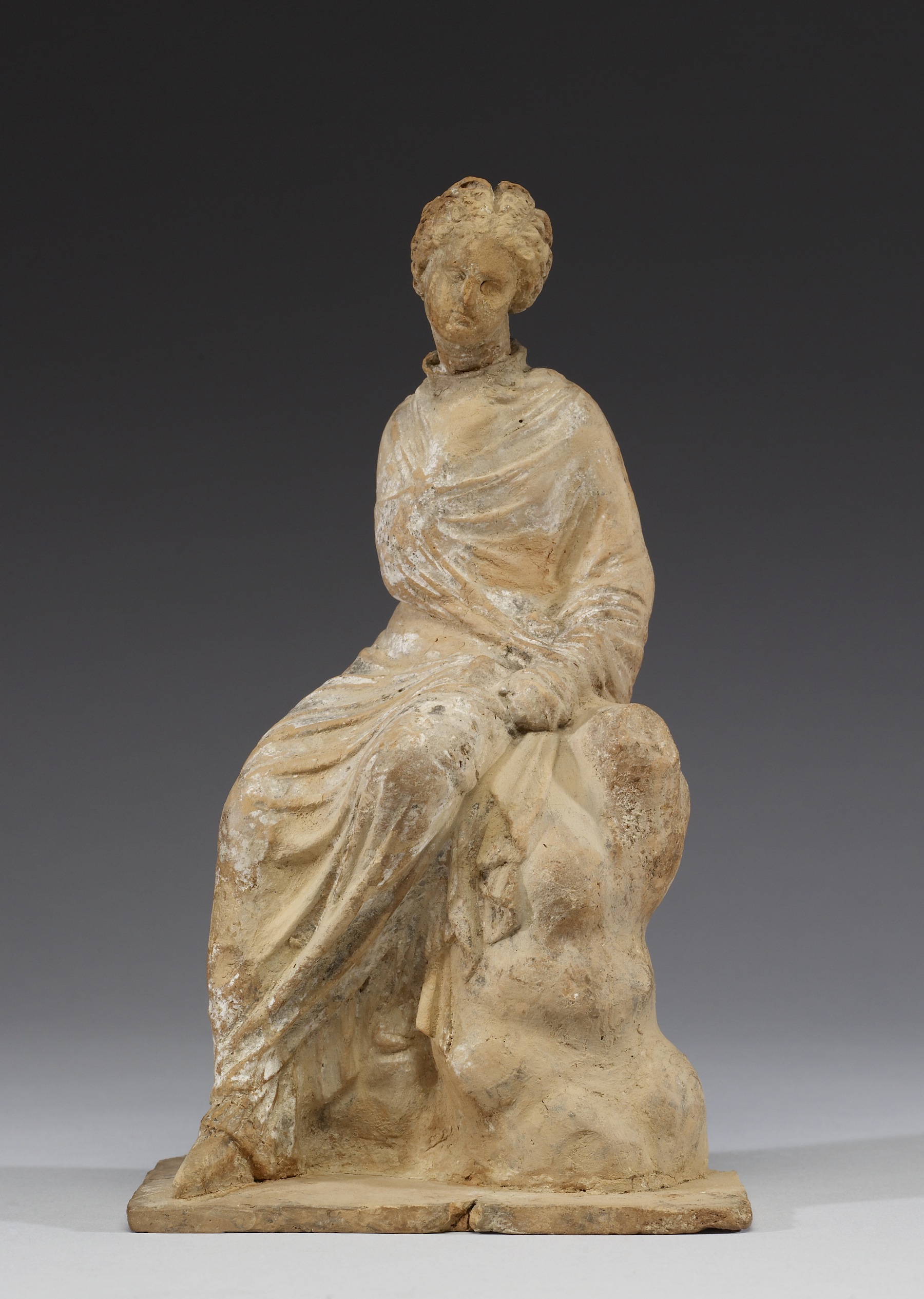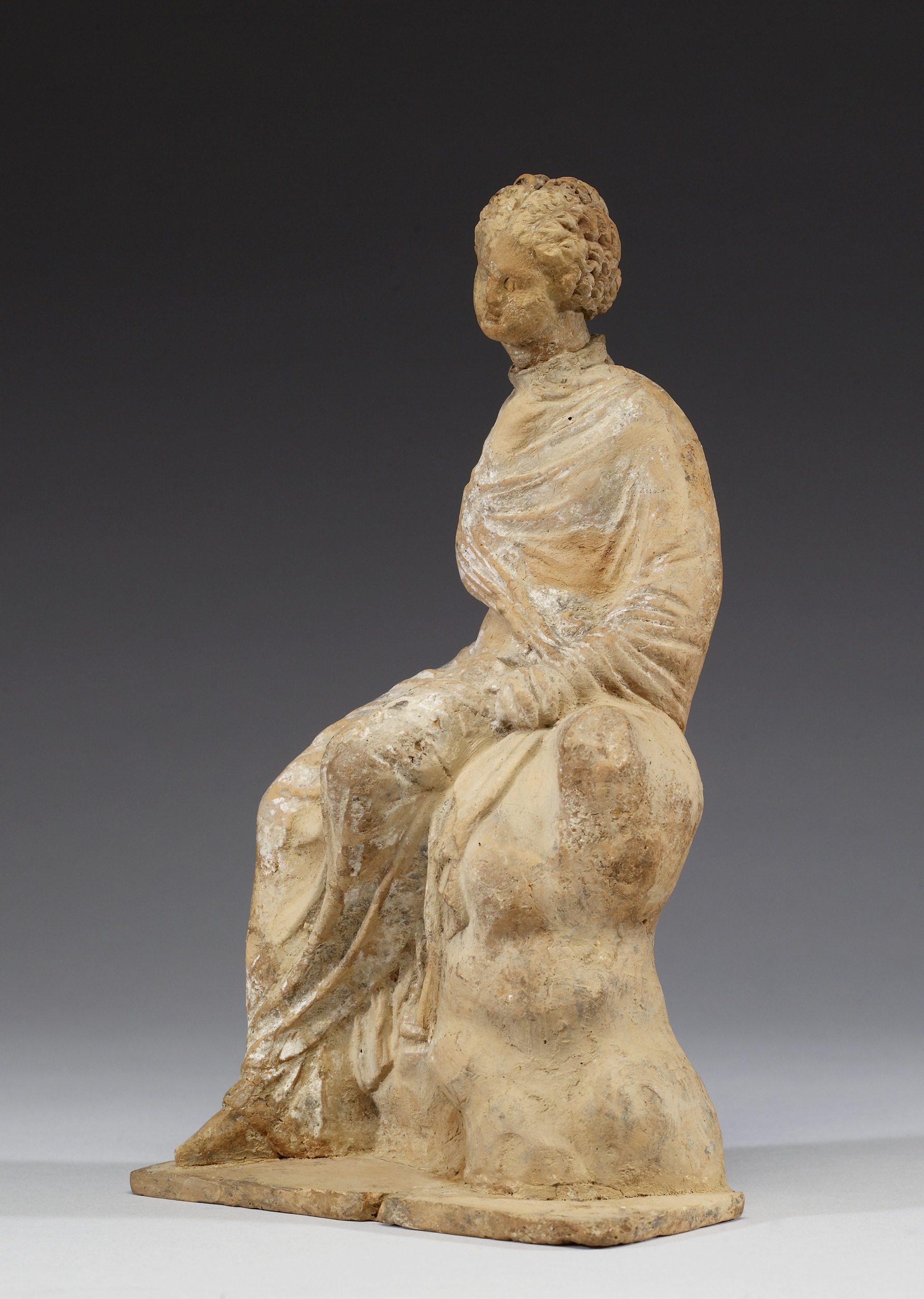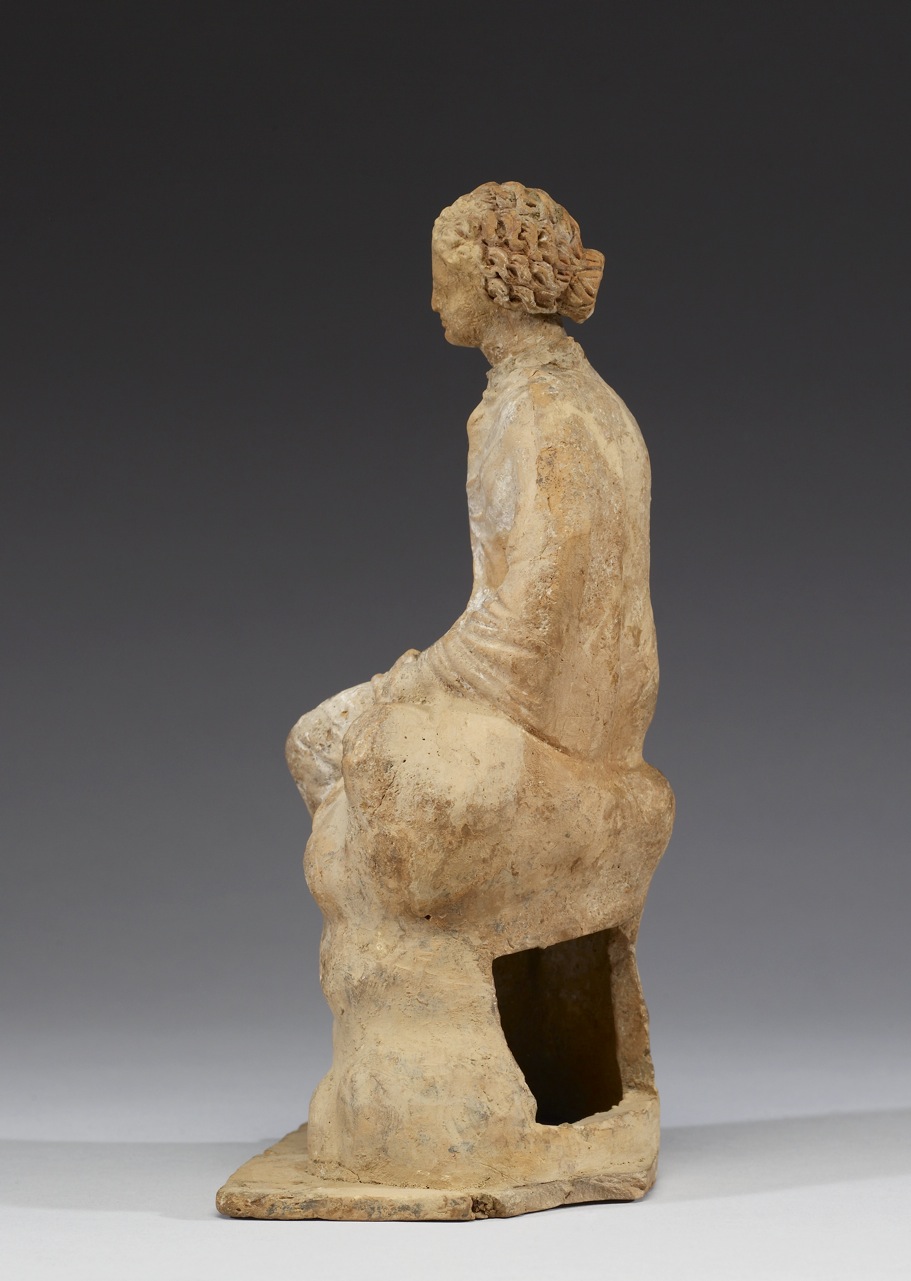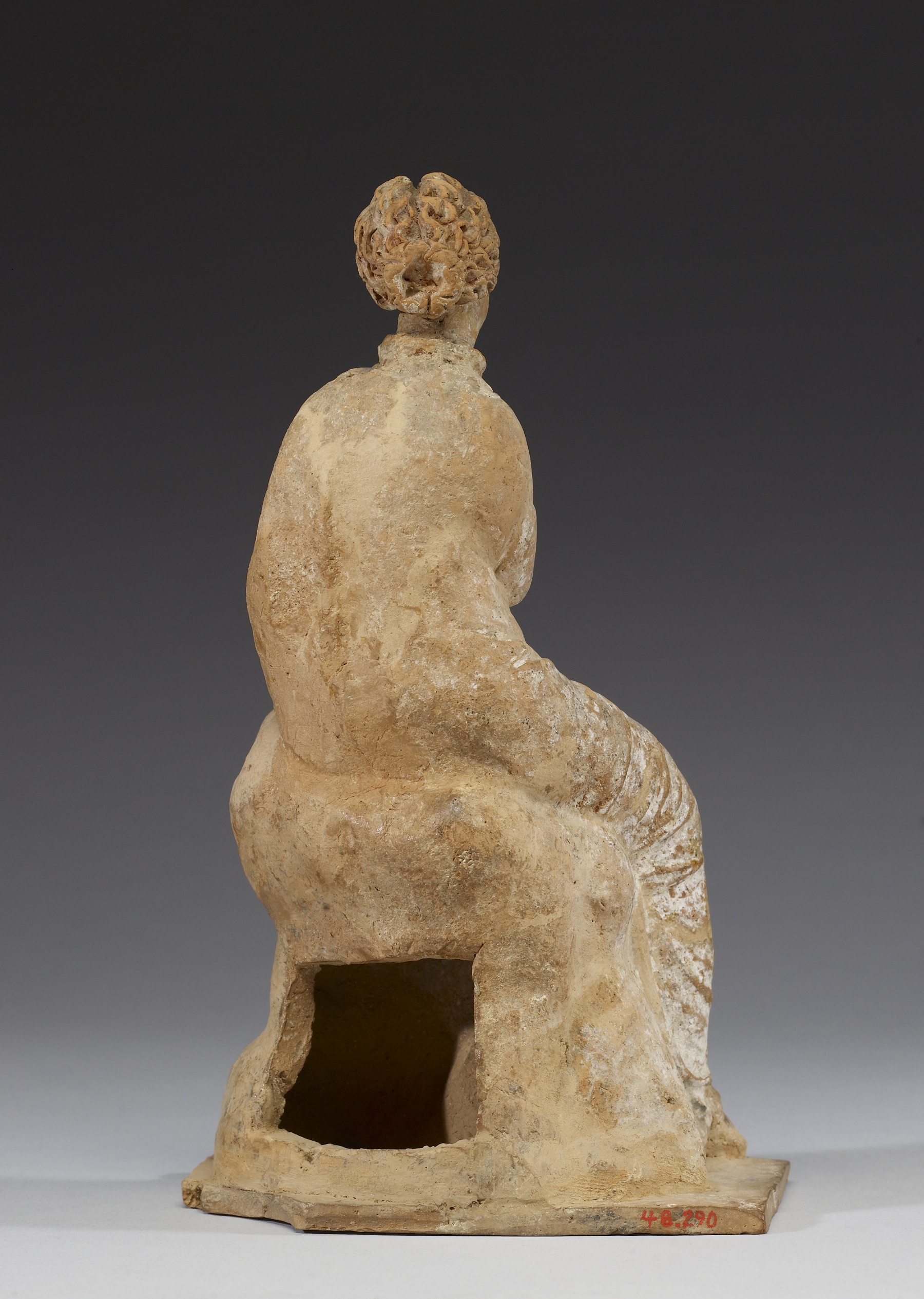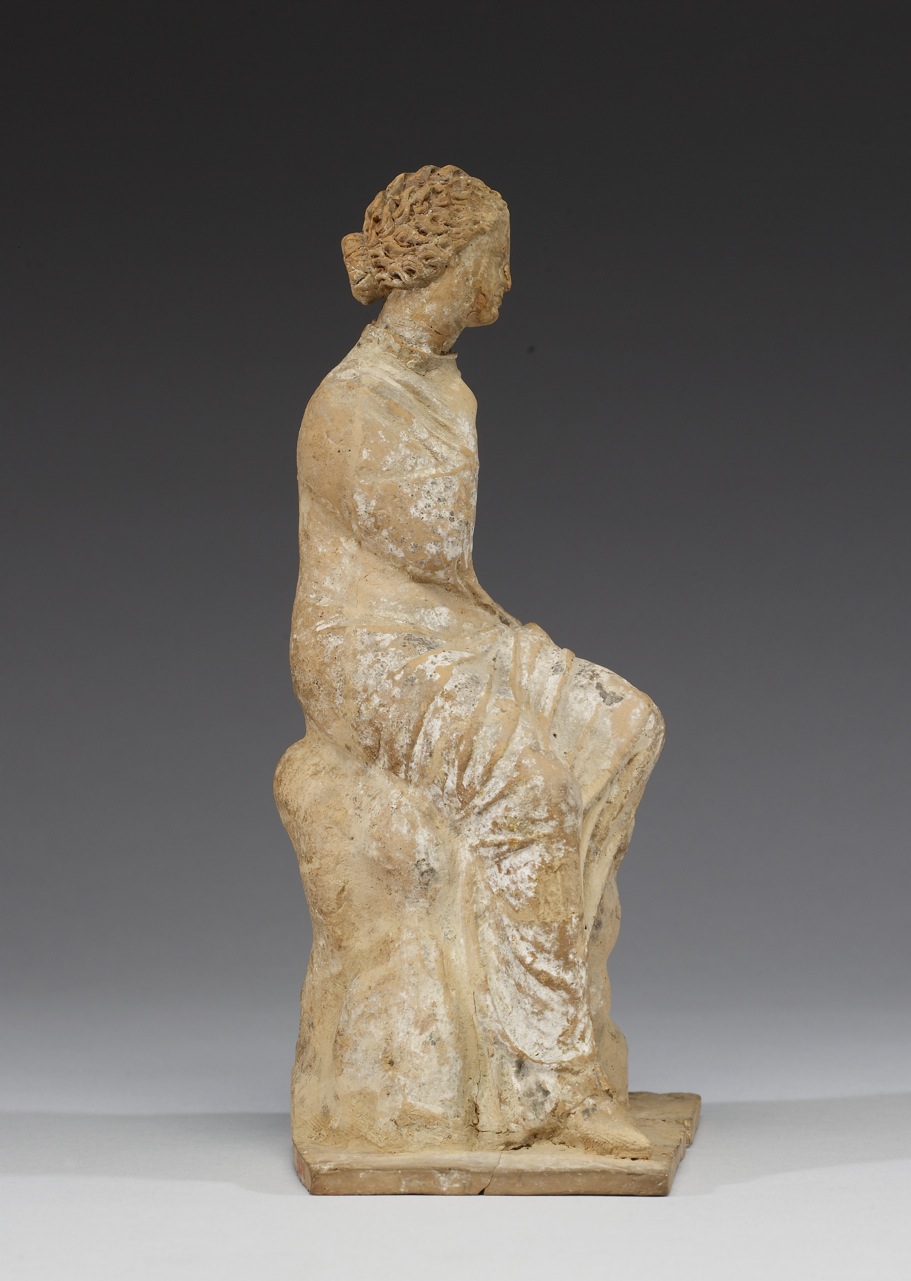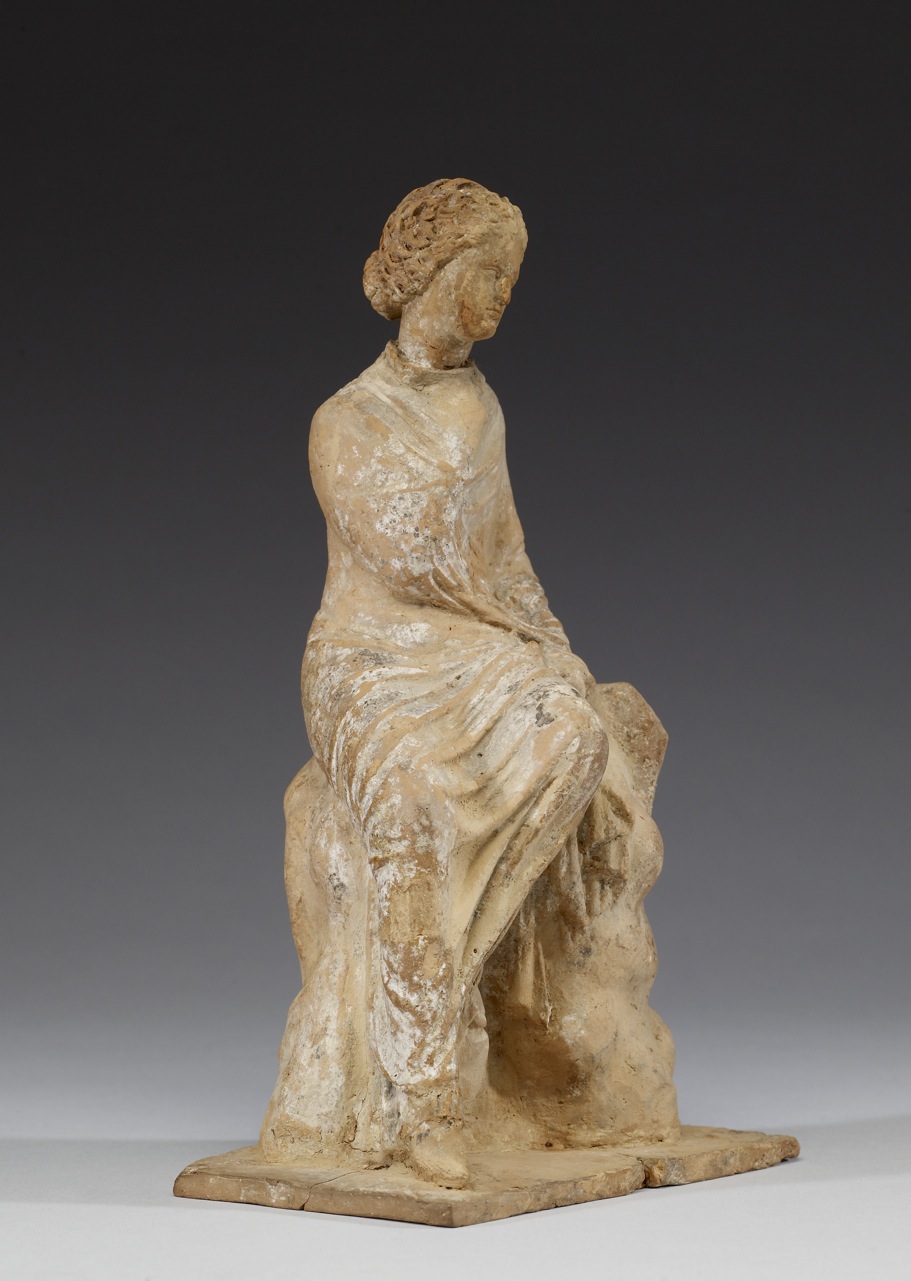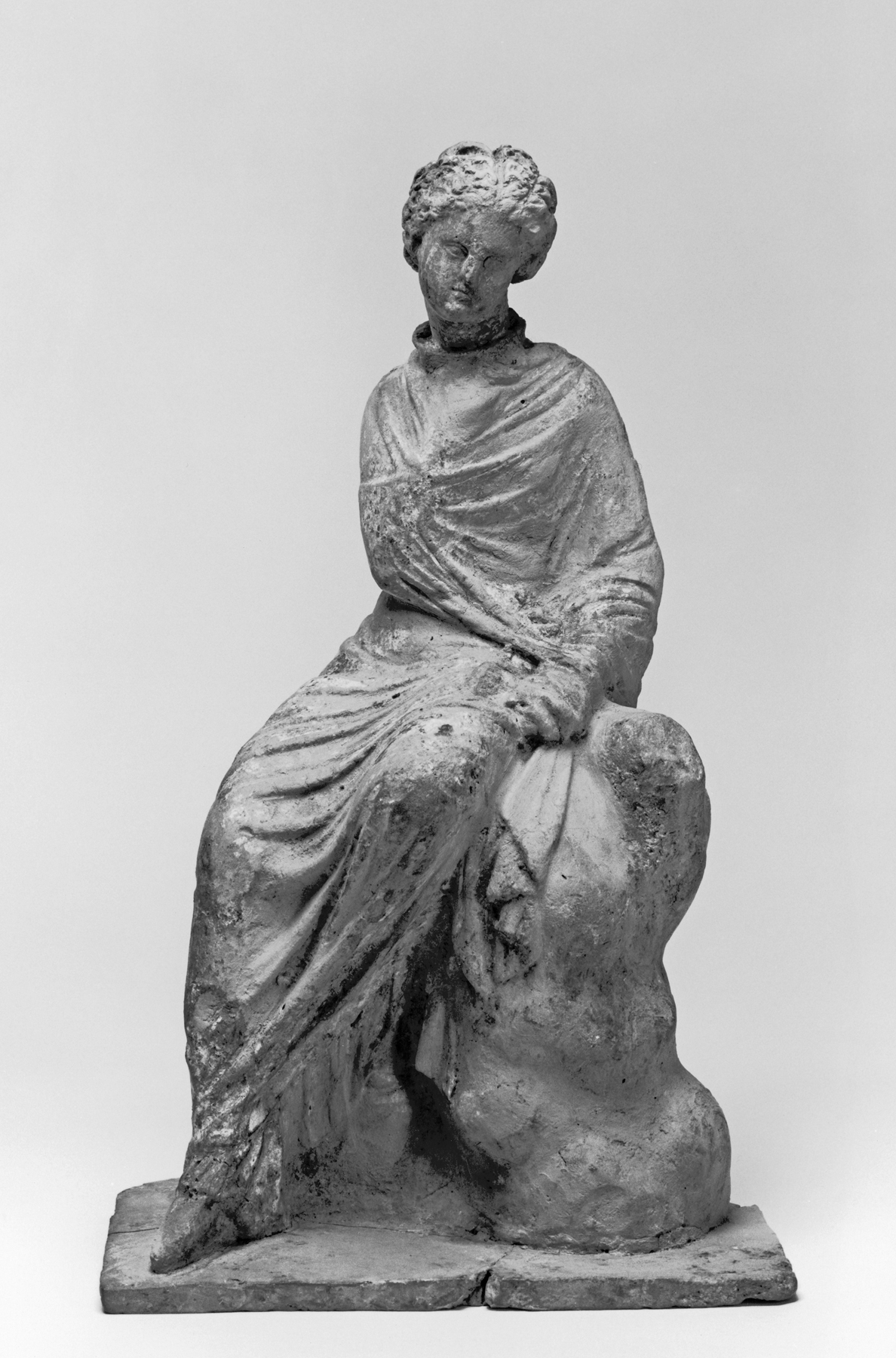Seated Maiden with "Melon" Hairstyle
(Ancient Greece )
Perched on a large rock, the woman sits with her legs angled to her right, while her head is turned downward and to her left. A voluminous mantle covers her body, including both arms, leaving only her head, neck, and one shoe exposed. White paint survives on her face and drapery, while her elaborate coiffure was painted brown. While the statuette is modeled in the round, the drapery and rock are more schematic and flatter on the back. The piece has a large vent hole on the back of the rock.
Although generally referred to as Tanagra figurines after the most famous findspot, Tanagra (modern Schimatari) in Boeotia, Greece, statuettes of this type have been found at other sites in the ancient world, including Myrina and Smyrna (modern Izmir) in Asia Minor. The most common forms of the statuettes depict young women sitting, standing, or in the process of graceful movement, but there are also examples showing men or children. The statuettes were used as grave offerings, votives, decorative objects, and perhaps toys. The hair, clothing, skin, and jewelry of the pieces were originally painted, although most of the colors are presently faded.
Provenance
Provenance (from the French provenir, 'to come from/forth') is the chronology of the ownership, custody, or location of a historical object.
Joseph Brummer, Paris and New York, [date and mode of acquisition unknown]; Henry Walters, Baltimore, 1927, by purchase; Walters Art Museum, 1931, by bequest.
Exhibitions
| 1988-1989 | From Alexander to Cleopatra: Greek Art of the Hellenistic Age. The Walters Art Gallery, Baltimore. |
Conservation
| Date | Description | Narrative |
|---|---|---|
| 2/3/1960 | Treatment | cleaned |
Geographies
Greece or Turkey, Eastern Mediterranean (Place of Origin)
Measurements
8 11/16 x 5 1/16 x 3 9/16 in. (22 x 12.9 x 9 cm)
Credit Line
Acquired by Henry Walters, 1927
Location in Museum
Accession Number
In libraries, galleries, museums, and archives, an accession number is a unique identifier assigned to each object in the collection.
In libraries, galleries, museums, and archives, an accession number is a unique identifier assigned to each object in the collection.
48.290

